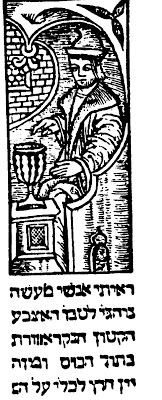
TIL about Rotwelsch, the "language of swindlers" used in German speaking portions of Europe from the middle ages on.
It was used by hucksters, tricksters, & bandits, many of whom were... Jews!
How do we know? Because over 20% of the sociolect is made of Hebraisms!
1/4
It was used by hucksters, tricksters, & bandits, many of whom were... Jews!
How do we know? Because over 20% of the sociolect is made of Hebraisms!
1/4
The first major attestation of Rotwelsch is in the 1509 Liber Vagatorum, which included a preface by Martin Luther & was widely disseminated thanks to the printing press.
It describes the practices of swindlers & thieves, & includes a section on the vocabulary of Rotwelsch.
It describes the practices of swindlers & thieves, & includes a section on the vocabulary of Rotwelsch.
Luther says: "such Beggars’ Cant has come from the Jews, for many Hebrew words occur in the Vocabulary.."
Luther's well-known virulent anti-Judaism is expressed here in attributing the origins of Rotwelsch to Jews.
But the vocabulary shows Jews were undoubtedly participants.
Luther's well-known virulent anti-Judaism is expressed here in attributing the origins of Rotwelsch to Jews.
But the vocabulary shows Jews were undoubtedly participants.
The sociolect also has heavy influences from Sinti-Romani.
Thus, various downtrodden & underprivileged groups, disadvantaged & constricted in the market, formed a network involved in economic domains that others tarred as corrupt & cheating, from which the vocabulary grew.
Fin
Thus, various downtrodden & underprivileged groups, disadvantaged & constricted in the market, formed a network involved in economic domains that others tarred as corrupt & cheating, from which the vocabulary grew.
Fin
English translation of the Liber Vagatorum is available here: gutenberg.org/files/46287/46…, encyclopedia entry with Hebraisms here: jewishstudies.rutgers.edu/docman/rendsbu…. On the Nazi's trying to eradicate the language, see here: nytimes.com/2020/10/13/boo….
• • •
Missing some Tweet in this thread? You can try to
force a refresh














